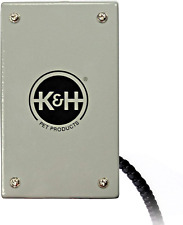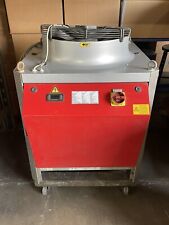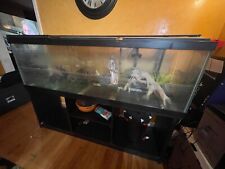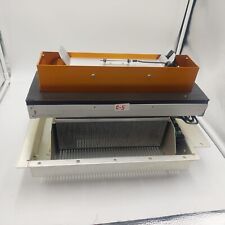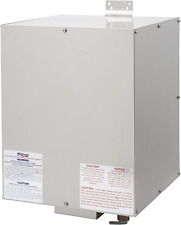Care of Red Footed Tortoise

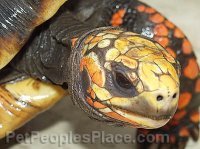
Red-Footed Tortoises are inhabitants of grassland savannahs and forests in South America. They can tolerate fairly high humidity and temperatures ranging from the mid 80’s to low 70’s with the occasional drop down into the 50’s. Access to fresh water should be provided at all times, Red-Foots do drink a lot of water and respond well to daily showers and weekly soaks.
Diet and Feeding
Red Foot tortoises are omnivorous. Precise tastes and requirements may vary seasonally. Attempting to sustain a Red-foot tortoise on a diet of mixed grasses would not be advisable; this species is ill equipped to effectively metabolize large quantities of silica-rich grass. One consequence of the higher protein, higher purine content diet of Red-foot and Yellow-foot tortoises is that they must always have access to fresh drinking and soaking water, and must be provided with adequately humid enclosures or terrariums. Dehydration is a very serious hazard to any tortoise consuming higher protein and purine content foods (mushrooms, for example).
It is no coincidence that all species with this class of dietary preference occur in high rainfall, high humidity ecosystems with regular access to free water. In practical terms, both species require high humidity maintenance. As with all tortoises, they also require a high ratio of calcium to phosphorus, additional trace elements and vitamin D3. Sprinkle the food every seven to ten days with Rep-Cal Calcium supplement or Miner-All. Use without vitamin d3 for outdoor specimens and with vitamin d3 for indoor specimens. Red-foot and Yellow-foot tortoises do not bask to the same extent as arid-habitat species, and therefore obtain much of their D3 needs in nature from the animal component of their diet.
The Red-Footed Tortoise has excellent color vision. They need dark leafy greens such as dandelions, turnip greens, mustard greens, romaine lettuce, collard and beet greens. Toppings such as alfalfa hay, timothy grass, ryegrass and oats are good for fiber in the Red Foot’s diet. Their diet should be supplemented with protein such as crickets, worms, cooked egg and low calorie cat food or dog food and occasional portions of commercial tortoise foods. These should only be as supplements and not with every feeding.
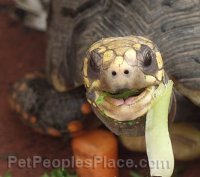
Limit the intake of meats to about once every week. Rinse all grocery store greens and fruits to remove pesticide residues. Mader’s ‘Reptile Medicine and Surgery’ (1996), recommends 75% vegetables and greens, 20% fruit, and 5% high-protein-content foods. As with any turtle or tortoise variety is key. Feed your Red-Foot a mix of chopped greens such as romaine lettuce, dandelion, mustard and collard greens sprinkled with fibrous toppings such as alfalfa hay, timothy grass and oats. On every second to third feeding, along with the chopped greens and grasses add some chopped papaya, mango, prickly pair or similar fruits. Fruits are normally consumed in a very ripe state after they have fallen from the tree.
Once every 7 days, along with the chopped greens and grasses, add small portions of protein such as chopped worms, crickets, chopped cooked egg or possibly even a commercial tortoise food. The greens, grasses and fruits mentioned above are just examples of a wide variety of foods that your Red-Foot can and will eat. You can substitute comparable foods in most cases. Some suggestions are mushrooms, sow thistle, summer squash, green beans, yams, hibiscus and dandelion flowers and leaves, plumbs, grapes and cantaloupe and berries such as blackberries, strawberries and mulberries. Do not feed bananas.
Hatchling tortoises should be fed daily. A diet of chopped greens (kale, endive, mustard, dandelions, etc.) and (once a week) a commercial tortoise diet (15% to 18% protein) should be fed to the tortoises. They should be soaked in shallow lukewarm water every day. Do not keep them on sand. Slightly moist peat moss or moist coconut husk is an ideal substrate that will help elevate humidity. It must be changed regularly to prevent bacteria and mold build up. It is best not to feed the tortoises on the peat moss. They seem to be able to pass the peat moss safely however if eaten in small quantities. If your tortoise is kept warm, fed and watered regularly, and given adequate room it should live for years. Small tortoises can grow about 2 inches per year.
Housing
The substrate of choice is cypress mulch or something possessing the same humidity holding properties in order to keep their shells/skin from drying out in captive conditions. In outdoor pens in areas of high sand content, food should not be placed directly on sandy soil. Sand can build up in the tortoises GI tract leading to possible impaction and even death. A completely separate sand-free area in the habitat should be utilized to feed.
A typical habitat for a Red-foot Tortoise should be large enough for it to walk around, and contain several elements – a pool, a basking spot, and a shady spot. This would be at least 10 to 20 square feet. If weather permits, they should be housed outdoors. When housed indoors the tortoises should be exposed to full spectrum UV lighting for about 13 hours a day. The Red-foot Tortoise especially needs water to soak and defecate in.
If these tortoises are to be kept successfully, they will need to have a temperature gradient so they can move to cooler areas when needed, and likewise, also move to warmer basking areas. During the day, they should have access to areas about 90-95°F and cooler areas in the low to mid 80s. At night the temperature should be lowered to about 68-75°F. This species does not hibernate in nature. Facilities must be provided for the continued health and well being of the tortoise indoors in cooler (non tropical) climates.
Indoor Accommodation
Always try to avoid glass tanks such as aquariums. When tortoises can see through to the outside they have a tendency to spend most of their time trying to get out. If you must use a glass tank, cover the bottom four to six inches to block your tortoise’s view. The most common form of indoor accommodation for small or medium sized Red-foot Tortoises consists of what looks like a bookshelf unit flipped onto its back. A reasonable size habitat for a hatchling is 2 feet by 3 feet, as the animal grows the size of this habitat should be increased. For a large adult Red-foot tortoise the indoor accommodation should be at least 6 feet by 4 feet. Food, water and eventually nesting containers should be placed flush with the surface for easier animal access when possible.
The water area of the habitat should be large enough to allow the tortoise to soak in it if it wishes – it must also be shallow enough to protect from drowning. Keep the water clean at all times. Red-Foots tend to defecate and urinate in their water. Remember, this is the same water they drink so keep it clean! Mist the indoor habitat daily and soak your Red-Foot at least once a week.
Considering the Red-Foot needs a higher humidity then most tortoises a substrate mix that will help maintain this humidity is recommended. A mixture of topsoil, sphagnum moss and "Bed-A-Beast" will work as a good substrate. If room permits, plant some shallow pans with grass, clover and dandelion for grazing and something like monkey grass or small shrubs for cover. Always try to make the habitat as natural as possible. Add a few rocks and a branch to help break up the tortoise’s view of the entire habitat lending to a feel of a larger area.
Make sure the habitat is large enough to establish at least some type of temperature gradient. In one corner of the environment a 100W spot lamp should be positioned to provide artificial basking facilities. This should be positioned to provide a basking spot of 95°F or so in that section of the habitat. The habitat should also be equipped with a full spectrum fluorescent light no more than 18" above the ground to provide for UVB. A UVB source is necessary for Vitamin D3 syntheses (needed in calcium metabolism). A supplement such as Rep-Cal Calcium supplement with vitamin d3 or Miner-All is recommended. There should be a hide box located in the corner away from the basking spot to allow the animal a dim retreat.
Outdoor Accommodation
Even though red-footed tortoise are medium-sized, they still need a large area or enclosure to roam in. 9 sq ft. per tortoise is recommended (Rundquist, 1994). Predator proof outdoor habitats offer many advantages over indoor accommodations and should seriously be considered as an option during warm weather.
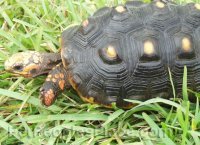
Overall, this species does best in naturally humid climates outdoors. If your area is not naturally humid, water timers and a misting/sprinkler system can be utilized to artificially create one. Some areas of the habitat should be heavily planted to allow the Red-foot a cool dim retreat. Provision of a wet muddy area for wallowing will also be appreciated by your tortoise. Red-foots take readily to using a hutch or doghouse-like artificial retreat. Concrete floors are not recommended because they tend to be very cold and have been reported to cause prolapsed of the penis in male red-foots (Rendquist, 1994). In areas with cool nights a thermostatically controlled ceramic heater in such a retreat will provide the tortoise with an area that remains above 60°F.
When building an enclosure for a Red Foot Tortoise you need to provide plenty of room for your tortoise to explore. For an adult I would recommend 10 to 12 feet square or larger. The larger the better. Provide grazing plants such as dandelion, clover, chicory and chickweed and common grasses such as monkey grass, fescue or Bermuda grass.
Your tortoise will need areas of shade and sunlight and a place to burrow or hide. Plant bushes or shrubs that can provide shade and grazing such as Hibiscus and Yucca and maybe even something like Wandering Jew for cover. Provide a partially buried hide box and an area of loose dirt and leaf mulch in one corner. The plants, hide box and mulch area will provide your Red-Foot with several areas of retreat. A shallow pan for water is needed. Dig a depression or hole to match the water pan’s size and place the pan so that the top is at ground level.
This provides easy access but make sure your tortoise can easily exit the water dish at will. Add a few rocks and maybe a small fallen branch or two to break up the scenery. Make sure branches are not so big that the tortoise can fall off and land on its back. It is also recommended to hose down the entire enclosure daily and soak your tortoise at least once a week. This simulated rainfall can help stimulate your Tortoise’s appetite and increase it’s activity levels. There are different substrates available for indoor and outdoor enclosures but for my outdoor enclosure I opt for the ground itself, planted as specified above.
Breeding
Red-foots have peculiar mating rituals. If two Red-foot Tortoises are to mate, they first stand at each other’s side. The instigating male will begin shaking its head to the side. If the other Tortoise is a male, it will shake its head in response, and the two will usually get into a mini-brawl. If it is a female, the Tortoise will not respond. The male will sniff the female’s tail to make sure it’s a female, and if confirmed, mating will commence. During a mating session, the male will make a clucking sound, which is similar to the clucking of a hen. Eggs incubate for about 120 days. Incubation temperatures should remain at 86°F.
Red-foots are capable of producing eggs at any time during the year, although seasonal activity may be noted. One collection of tortoises kept outside in Kansas during warm weather and indoors during the colder months, laid eggs only from October to April for 7 consecutive years (Renquist, 1994). Because red-foots are capable of producing eggs at any time, it is advisable to have a nesting chamber full of damp peat moss and sand available to the females at all times.
A nesting chamber can be constructed by creating a large, open topped box with a ramp so the tortoises can enter and exit at will. The chamber should have the dimensions of 4 x 4 x 2 (l x w x h in feet) and be filled with moist nesting material to a depth of at least 20 inches (50 cm). It is important that more than one male be included in a breeding group, male to male combat is important in inducing breeding in red-foots.
Male to male combat begins with a round of head bobbing from each male involved, and then proceeds to a wresting match where the males attempt to turn one another over. The succeeding male (usually the largest male) then attempts to mate with the females. The ritualistic head movements displayed by male red-foots are thought to be a method of species recognition. Other tortoise species, most notably the closely related and sometimes sympatric yellow-footed tortoise (Geochelone denticulata), have different challenging head movements. Red-footed tortoises have challenging head movements that are a series of lateral jerks, by contrast, yellow-footed tortoises utilize a long sideways sweep in their displays (Auffenberg, 1965).
Male red-foots peruse walking (seeming uninterested) females until they can maneuver them into a position for mating. The unique body shape of the male red-footed tortoise facilitates the mating process by allowing him to maintain his balance during copulation while the female walks around, seemingly attempting to dislodge the male by walking under low-hanging vegetation (Moskovits, 1988).
Incubation and Hatchling Care
Gravid females will become restless before oviposition, and will wander around the enclosure looking for a suitable nesting site. A few days before oviposition occurs, the females will begin digging in their chosen nesting site. After the eggs are laid, the female will cover the eggs with substrate. Make sure to note where the female has been digging so that the eggs can be retrieved for artificial incubation. Clutch sizes vary from one to eight eggs, although some large clutches may reach 15 eggs. Red-foots are capable of clutching several times during the year.
After the eggs have been removed, bury them halfway in a container of slightly moistened vermiculite (1:1 ratio vermiculite to water by weight) and place them in the incubator. There is some controversy among tortoise breeders as to whether or not tortoise eggs should be moved from their original orientation in the nest before artificial incubation. Some breeders are careful to mark the top of the eggs so that their orientation is not changed when they are moved to the incubator. Others see this procedure at unnecessary and do not believe disorienting the eggs in the incubator has an effect on hatch rate. According to Marchellini and Davis (1982), red-footed tortoise eggs that were rotated from their original positions had a lower hatch rate, poorer survival rates, and higher incidence of hatchling deformities.
Different breeders have different results, but taking care not to rotate the eggs from their original orientation does not take much effort and may improve hatching rate and hatchling success. Do not incubate the eggs in a sealed container, sealed containers encourage CO2 buildup which can be detrimental to the developing eggs. The humidity in the incubator should be 80-100% and the incubator should be opened at least once a week, if not more, to allow fresh oxygen to reach the eggs.
Red-foot eggs are temperature sex dependent, incubation temperatures above 88°F (31°C) will produce females, and temperatures below 82°F (28°C) will produce males (Renquist, 1994). High temperatures however, can cause lower hatch rates and higher rates of deformed hatchlings. The ideal incubation temperature, if mixed-sex offspring are desired, is 84°F (29°C). Incubation periods range from 105 to 202 days, with an average of 150 days (Paull, 1995). After pipping, the baby tortoises will often spend a few days in their shell absorbing the yolk. Often hatchling tortoises will emerge with some yolk sac still present, cleanse the yolk sac with a mild disinfectant such as betadine and keep the hatchling on moist substrate until the yolk is absorbed (Renquist, 1994).
Hatchling tortoises can be housed inside in aquariums on a substrate of peat moss and sand, and have the same temperature and lighting requirements as the adults. Make sure to provide areas of high humidity and a shallow water dish at all times, hatchling red-foots are very susceptible to dehydration.

